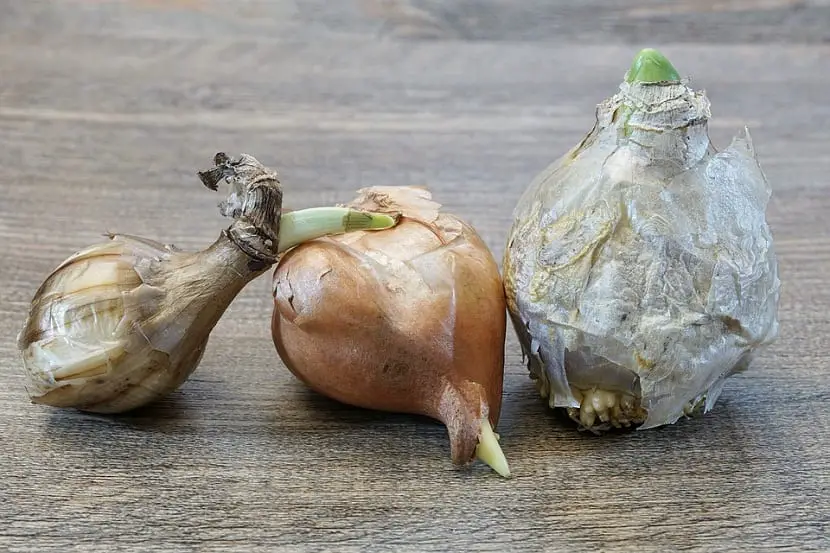
Speaking of bulbs or bulbous plants Beautiful plants such as tulips, gladioli, irises, dahlias, caladiums, etc. come to mind.
Some are true bulbs, in the correct use of botanical terminology, while others are not. Despite this, in gardening and landscaping, the term bulb is used to describe a wide variety of plants geophytes and their underground storage organs, which include bulbs, corms, rhizomes, and tubers.

Some of these organs are modified stems, while others are thickened roots. Although they are structurally different, all bulbs store food so that plants survive during one inhospitable season and grow in subsequent seasons.
These plants, in adverse weather and climate conditions, are true nutrient reservoir bags so that plants can grow and flourish even in very difficult conditions.
Classification of bulbous
According to their storage structure, bulbous plants are classified into Bulbs, Corms, Tubers and Rhizomes.
Bulbs
These they are from underground stems and that is where the nutrients accumulate, but what really stands out is its format, which resembles a disk, or a flattened ball.
Most common examples are onion and garlic. It is good to note that in the case of garlic, it is not exactly made up of a bulb, but of various bulbs, which are popularly known as “garlic cloves.”
As for food, they do not have to worry, since they are also rich in nutrients. On the other hand, the union of these two ingredients is beneficial for our health. Very used as condimentsIts combination in the preparation of dishes is not only delicious, but also indicated by nutritionists, due to the anti-inflammatory and antibacterial action of onion, as well as being indicated for cholesterol control.
Also its shell can be used, since it is rich in quercetina component that helps you breathe better, being perfect for those who suffer from asthma or bronchitis. But do not think that garlic is left behind, after all, it is rich in antioxidants, which helps the immune system to work better.
Tubers
As with bulbs, in the case of tubers the trunk is also underground. Then, what is the difference?
The difference is basically the format, which is generally more rounded. What’s more, look like a hypertrophied rootwhich may sound strange, but it actually allows them to manage to store substances, such as starch and inulin.
The first is a natural source of energywhile the second helps the intestine to absorb various minerals, such as magnesium and calcium. These are just a few examples, since each food has its own benefits.
Perhaps the most common tuber is the potatorich in vitamin B6, acts on the nervous system helping to relieve stress from day to day. What’s more; It is a source of fiber, protein and vitamins C, E, K and the B complex in general.
Rhizomes

The rhizome is a stem that functions as a root. These usually have the cylindrical format and grow parallel to the groundwhich can be underground or occur at the top, as is the case of the banana.
It also has buds throughout its formation. Examples of rhizomes in addition to the banana, is the ginger.
Corms
The corm is an underground bulb; with leaves, stems and roots and plants with corms are Cormophytes.
Corms are tuberous plant storage organs that are used to survive winter or other harsh conditions such as drought and summer heat. For its characteristics, they are plants that become perennial.
Many corms produce two different types of rootsthose that develop from the bottom of the bulb are normal fibrous roots, and are formed when the stems develop and are produced from the surface of the base to the bottom of the bulb.
The second type of roots are thicker roots that form the new rhizomes in the growth stage, are called contractile roots and push the rhizome towards the ground.

